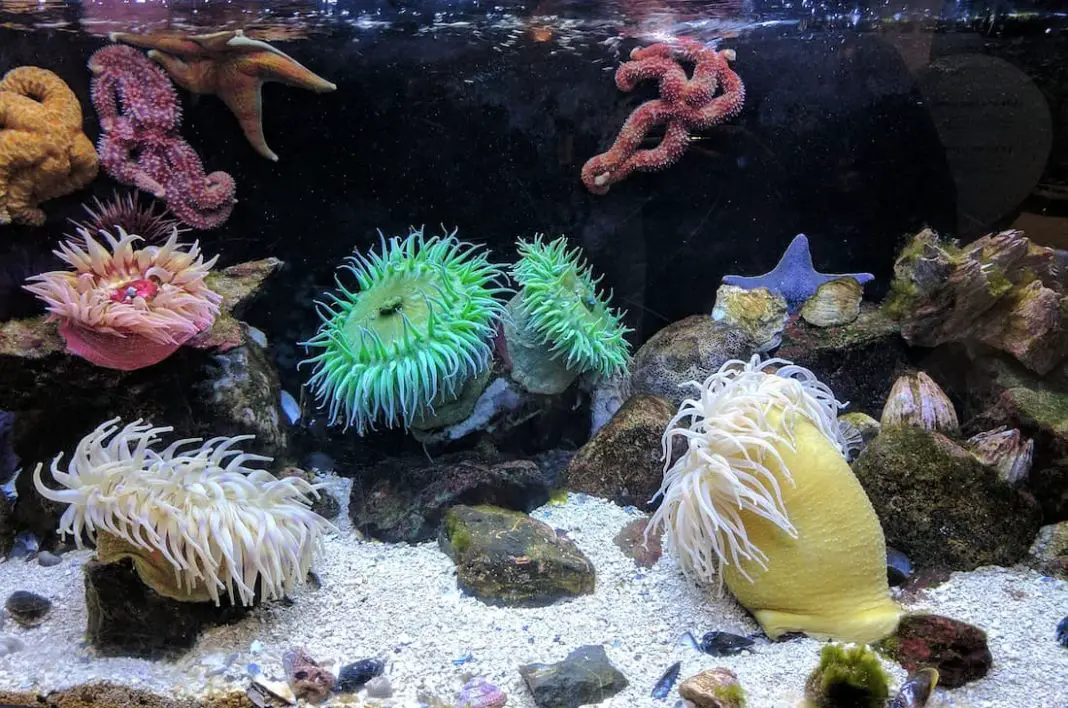The tulip anemone can overpopulate your reef tank after they sprout out of living rock. Removing them by pulling them out can only lead to a population explosion as each piece can grow into another anemone.
Should You Remove A Tulip Anemone?
The tulip anemone is an opportunistic species that can often make its way into saltwater aquariums on reef rock or coral. They can quickly monopolize a tank, competing for food and space.
The best way to remove tulip anemones includes chemical methods and introducing predators.
Ways To Remove Tulip Anemones
One way to remove tulip anemones in a reef aquarium is by injecting them with one of the below chemical or liquid solutions. If you’re using any of the methods below, you should inject the solution directly into the stem of the anemone with a needle and syringe. If working with a corrosive chemical, it’s recommended to wear protective eye goggles and gloves as a precaution.
Bottled Lemon Juice Concentrate
Inexpensive bottled lemon juice can be used for immediate results. It’s also considered safe for a reef tank and easy to do. Give lemon juice injections of 0.5 ml to the base of the tulip anemone using a syringe.
Calcium Hydroxide
Injecting a tulip anemone with calcium hydroxide (kalkwasser) in a concentrated solution is one of the most common methods used to remove anemone. The consensus from the community is that although it may work, it’s not very efficient unless done properly. The kill-off rate is low if the calcium hydroxide is not directly injected onto the tulip anemone and if the solution is not strong enough. A problem with this one is that if you try to kill too many anemones at once, it can cause a problem with the tank’s pH level in your tank by adding too much calcium hydroxide at one time.
Hydrogen Peroxide
When injecting a tulip anemone, hydrogen peroxide is known to be quite effective by killing off the anemone fairly quickly.
Using Predators To Remove Tulip Anemones
In the quest to find a natural way of eliminating tulip anemones from saltwater aquariums, some marine animals are known to devour pesky anemones with pleasure without hesitation. However, before you decide to introduce such a fish, shrimp, nudibranch, or other options into your aquarium, you should consider the cons as well, especially in properly established reef tank systems:
Most of the fish suggested will pick at and eat various types of soft and stony corals, zoanthids, sea mats, and polyps.
Many of the predators naturally feed on various types of both sessile and motile invertebrates, such as other anemones, feather dusters, and other tube worms, clams, sea urchins, and crustaceans.
Those that may not eat them initially, once all the anemone has been consumed, they could likely search for alternative food sources such as these as well.
Some species can be sensitive and difficult to care for in captivity, primarily due to their specialized diet requirements.
Individual specimens will vary in their desire to eat different anemones, and the size of the anemone can also be a factor, too. Therefore, there’s no guarantee any particular animal will definitely get rid of your tulip anemone problem.
Natural Predators Of Tulip Anemones
For the above reasons, caution is advised when deciding to add any of these most commonly suggested animals to your aquarium for eradicating anemones:
- Butterflyfishes Auriga (Chaetodon Auriga)
- raccoon (Chaetodon lunula)
- Klein’s (Chaetodon kleini)
- long-nosed (genus Forcipiger species)
- teardrop (Chaetodon unimaculatus)
- copperband (Chelmon rostratus)
Filefishes: There are four species of genus Acreichthys filefishes, but the bristle-tail filefish (Acreichthys tomentosus) from the Indo-Pacific region is said to be the ultimate choice of being an anemone eater.
Puffers: The brown white-spotted or guinea fowl puffer (Arothron meleagris) may eat a tulip anemone, however, it grows to a very large size. Therefore, the tobies or sharp-nosed species of the Canthigastrinae sub-family may be more suitable.
Shrimps: The “true” peppermint shrimp (Lysmata wurdemanni) is by far the best choice of aquarists for eating tulip anemones, but the trick with this one is making sure you choose the right species.
Hermit crabs: Almost always reef safe, and beneficial algae eaters as well, in particular, one or two of the more common red-legged or white-spotted hermit crabs (Dardanus megistos) could also do the trick.
Nudibranches: Berghia sea slugs are by far the most popular choice as they’re nearly 100% safe and effective when used and cared for properly. These nudibranchs solely eat anemones and will die out without them present, meaning that you’ll need to take steps to ensure their survival.









